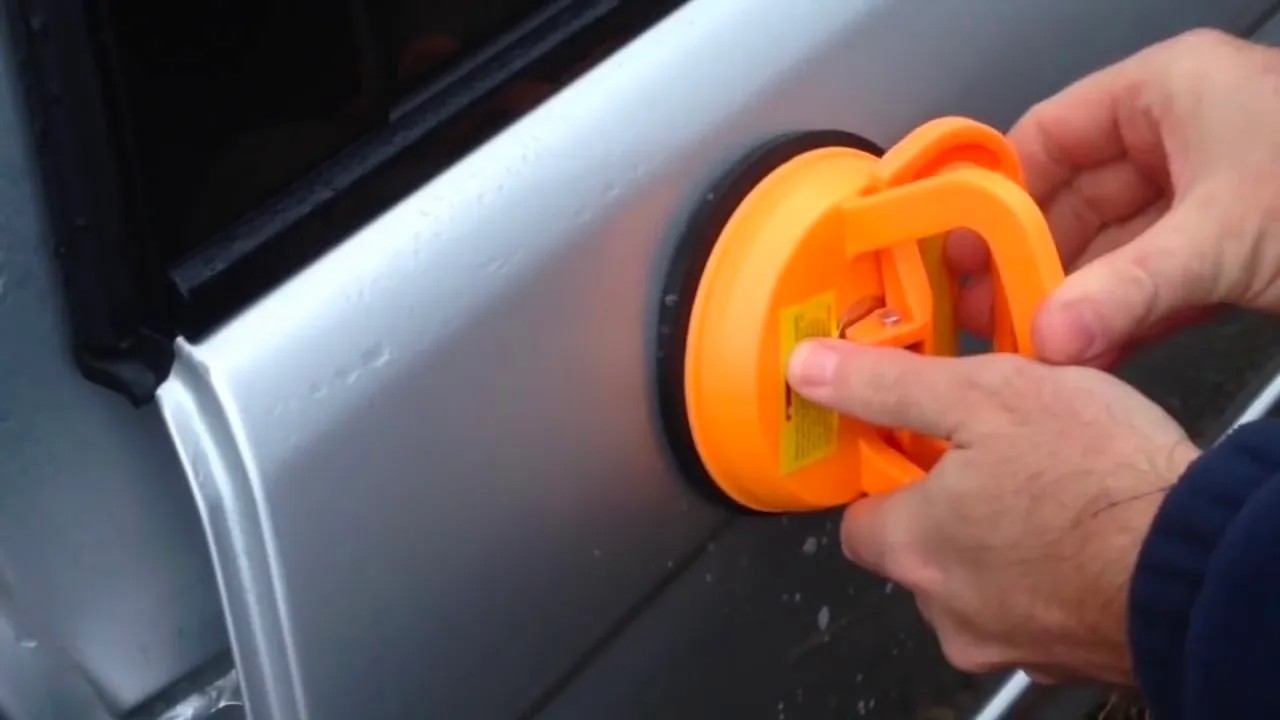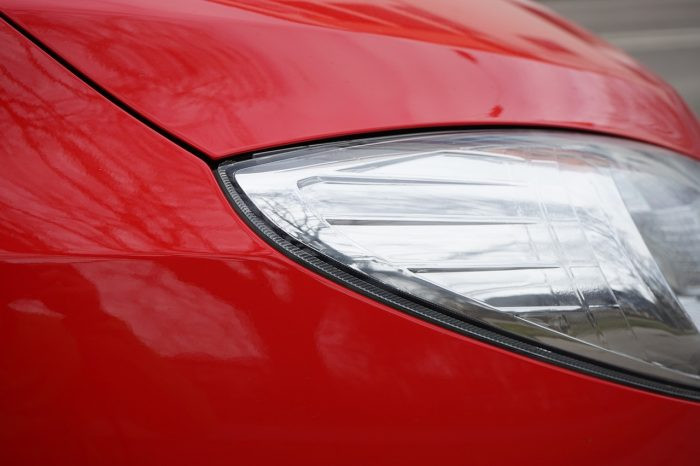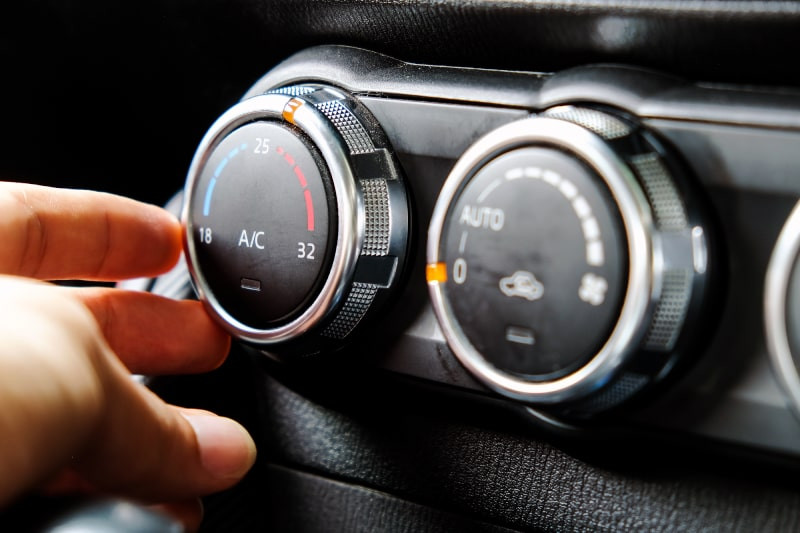1. Understanding the Car Headliner
What is a headliner in a car, and why is it important?
A headliner is the fabric lining attached to the interior roof of your car. According to a study by the University of Michigan’s Transportation Research Institute in 2022, headliners provide thermal insulation,...
1. Understanding the Car Headliner
What is a headliner in a car, and why is it important?
A headliner is the fabric lining attached to the interior roof of your car. According to a study by the University of Michigan’s Transportation Research Institute in 2022, headliners provide thermal insulation, absorb sound, and enhance the overall aesthetics of the vehicle’s interior. It consists of several layers, typically including a foam backing (often polyurethane) attached to a headliner board. This design helps regulate temperature and reduce noise levels inside the car.
 Car headliner is a fabric that is secured to the roof framing
Car headliner is a fabric that is secured to the roof framing
1.1. The Functions of a Car Headliner
What are the primary benefits of having a well-maintained headliner?
- Thermal Insulation: Headliners insulate the car’s interior, keeping it cooler in summer and warmer in winter.
- Noise Reduction: They absorb sound, reducing road noise and improving acoustics inside the car.
- Aesthetics: A clean, intact headliner enhances the car’s interior appearance, contributing to a more comfortable and enjoyable driving experience.
- Protection: Headliners can protect the roof from condensation and prevent moisture damage.
1.2. Materials Used in Headliners
What materials are commonly used in car headliners?
Headliners are typically made from fabric bonded to a foam backing, often polyurethane foam. According to research from the Society of Automotive Engineers (SAE), these materials offer a balance of durability, insulation, and aesthetic appeal.
| Material |
Description |
Benefits |
| Fabric |
Woven or non-woven textile material |
Aesthetic appeal, variety of colors and textures, durability |
| Polyurethane Foam |
Flexible, open-cell foam |
Excellent insulation, sound absorption, cushioning |
| Adhesive |
Specialized glue |
Bonds the fabric to the foam backing, must be heat-resistant and durable |
| Headliner Board |
Rigid board |
Provides a solid base for the headliner, typically made of cardboard, fiberglass, or reinforced plastic |
2. Common Reasons for a Sagging Headliner
Why do car headliners start to sag over time?
A sagging headliner is a common issue caused by the degradation of the adhesive that bonds the fabric to the headliner board. According to a 2023 report by J.D. Power, extreme temperatures and humidity are primary factors that accelerate this process.
 How to fix sagging headliner
How to fix sagging headliner
2.1. Heat and Sunlight Exposure
How do heat and sunlight affect the headliner adhesive?
Exposure to high temperatures and direct sunlight can cause the adhesive to dry out and lose its bonding strength. A study by the National Renewable Energy Laboratory (NREL) in 2021 showed that prolonged exposure to UV radiation can break down the chemical bonds in adhesives, leading to their failure.
2.2. Moisture and Humidity
How does moisture contribute to headliner sagging?
Moisture can seep into the headliner, causing the foam backing to absorb water and lose its shape. High humidity levels can also weaken the adhesive over time. Research from the American Society for Testing and Materials (ASTM) indicates that moisture can cause delamination of the fabric from the foam backing.
2.3. Poor Initial Installation
What role does the original installation play in headliner durability?
If the headliner wasn’t installed correctly with sufficient adhesive or proper techniques, it’s more likely to sag prematurely. According to automotive repair experts at CARDIAGTECH.NET, proper surface preparation and adhesive application are crucial for a long-lasting bond.
2.4. Physical Damage
Can physical factors lead to a sagging headliner?
Yes, activities such as children or pets pulling on the headliner can cause it to detach from the backing board.
What tools and materials do you need to fix a sagging headliner?
To repair a sagging headliner effectively, gather the following tools and materials:
- Headliner Adhesive: High-quality spray adhesive designed for automotive headliners. CARDIAGTECH.NET recommends using a heat-resistant adhesive.
- Fabric: New headliner fabric matching the original material.
- Foam Padding: Replacement foam padding if the original is deteriorated.
- Cleaning Supplies: Automotive cleaner and a soft brush.
- Spray Bottle: For applying cleaner.
- Utility Knife: For trimming excess fabric.
- Screwdrivers: To remove any trim or accessories.
- Pliers: For removing staples or clips.
- Measuring Tape: For accurate fabric measurements.
- Scissors: For cutting fabric.
- Clamps or Spring Clamps: To hold fabric in place while the adhesive dries.
- Lint Roller: To remove debris from the fabric.
- Safety Glasses and Mask: For personal protection.
- Heat Gun (optional): To soften adhesive.
- Steamer (optional): Can help to reattach the fabric to its frame
3.1. Choosing the Right Headliner Adhesive
What should you look for in a headliner adhesive?
Select a high-temperature-resistant spray adhesive specifically designed for automotive headliners. According to product reviews on CARDIAGTECH.NET, quality adhesives ensure a durable bond that withstands extreme temperatures.
| Feature |
Description |
Benefits |
| Heat Resistance |
Ability to withstand high temperatures without losing bonding strength |
Prevents adhesive failure and sagging in hot weather conditions |
| Spray Pattern |
Even and controlled spray pattern |
Ensures uniform coverage and prevents pooling or clumping of adhesive |
| Drying Time |
Fast drying but allows repositioning |
Speeds up the repair process while providing enough time to adjust the fabric |
| VOC Content |
Low volatile organic compound (VOC) content |
Reduces harmful emissions and improves air quality |
| Compatibility |
Compatible with various headliner fabrics and foam types |
Ensures a strong bond and prevents damage to the materials |
| Water Resistance |
Ability to resist moisture and humidity |
Prevents adhesive failure and sagging in damp conditions |
| Flexibility |
Remains flexible after drying |
Allows the headliner to move and flex without cracking or peeling |
| Long-Term Durability |
Maintains bonding strength over time |
Provides a long-lasting repair and prevents the headliner from sagging again |
| Ease of Use |
Easy to apply and work with |
Simplifies the repair process and reduces the risk of mistakes |
| Residue-Free Removal |
Can be removed without leaving a sticky residue |
Makes future repairs easier and prevents damage to the headliner board |
3.2. Selecting Headliner Fabric
How do you choose the right fabric for your headliner?
Choose a fabric that matches the original in terms of color, texture, and weight. CARDIAGTECH.NET offers a variety of headliner fabrics to suit different car models.
3.3. Essential Safety Gear
Why is safety gear important for headliner repair?
Safety glasses and a mask protect your eyes and respiratory system from adhesive fumes and debris. Proper ventilation is also crucial.
4. Step-by-Step Guide: Fixing a Sagging Headliner Without Removal
How can you fix a sagging headliner without removing it entirely?
4.1. Preparing the Area
How do you prepare the headliner for repair?
- Clean the Headliner: Use a soft brush and automotive cleaner to remove any dirt, dust, or debris from the sagging area.
- Protect Surrounding Areas: Cover seats, dashboards, and other interior surfaces with plastic sheeting to prevent adhesive overspray.
4.2. Applying Adhesive
How do you apply the adhesive for the best results?
- Spray Adhesive: Apply an even coat of headliner adhesive to both the back of the fabric and the headliner board. According to adhesive manufacturers, hold the can about 6-8 inches away for optimal coverage.
- Allow to Tacky: Let the adhesive sit for a few minutes until it becomes tacky.
4.3. Reattaching the Fabric
How do you reattach the fabric to the headliner board?
- Align Fabric: Carefully align the fabric with the headliner board, starting from the center and working your way outwards.
- Press Firmly: Use your hands or a small roller to press the fabric firmly onto the board, ensuring there are no air bubbles or wrinkles.
4.4. Securing the Fabric
What can you use to secure the fabric while the adhesive dries?
- Use Clamps: Use clamps or spring clamps to hold the fabric in place, especially around the edges.
- Allow to Dry: Let the adhesive dry completely, following the manufacturer’s instructions.
4.5. Trimming Excess Fabric
How do you trim any excess fabric?
- Trim Excess: Use a utility knife to trim any excess fabric around the edges of the headliner.
- Reinstall Trim: Reinstall any trim or accessories that were removed.
5. Alternative Methods for Quick Fixes
What are some alternative methods to quickly fix a sagging headliner?
5.1. Using Headliner Repair Pins
How do headliner repair pins work?
Headliner repair pins, also known as “sagging stoppers,” are inexpensive and easy to use. They push the fabric back into place and hold it against the headliner board.
5.2. Applying Fabric Glue
When is fabric glue a suitable option?
Fabric glue can be used for small, localized sagging areas. Apply a small amount of glue to the back of the fabric and press it firmly onto the headliner board.
5.3. Utilizing Steam Cleaners
How can a steam cleaner help with headliner repair?
A steam cleaner can soften the old adhesive, allowing you to reattach the fabric. Use a paint roller to smooth out any creases or wrinkles.
6. Preventing Future Sagging
How can you prevent your car’s headliner from sagging in the future?
6.1. Park in the Shade
Why is parking in the shade important?
Parking in the shade reduces the car’s exposure to direct sunlight, minimizing heat buildup and preventing the adhesive from drying out.
6.2. Use Window Tint
How does window tint help protect the headliner?
Window tint blocks UV rays, reducing the amount of heat and sunlight that enters the car, thus protecting the headliner.
6.3. Regular Cleaning
Why is regular cleaning important for headliner maintenance?
Regular cleaning prevents the buildup of dirt and debris, which can degrade the fabric and adhesive over time.
6.4. Control Humidity
How can you manage humidity inside your car?
Use a dehumidifier or moisture-absorbing packets to control humidity levels inside your car, especially during humid months.
7. When to Consider Professional Headliner Replacement
When is it best to seek professional help for headliner repair?
If the sagging is extensive or the headliner board is severely damaged, it may be best to seek professional headliner replacement. According to automotive repair experts, a professional replacement ensures a durable and aesthetically pleasing result.
7.1. Assessing the Damage
How do you determine the extent of the damage?
Inspect the headliner for large areas of sagging, tears, or damage to the headliner board. If the damage is severe, replacement may be the most cost-effective option.
7.2. Cost of Professional Replacement
What is the typical cost of professional headliner replacement?
The cost of professional headliner replacement can vary depending on the car model and the complexity of the job. According to repair estimates, the average cost ranges from $300 to $1,000.
8. Cost Analysis: DIY vs. Professional Repair
What are the cost considerations for DIY vs. professional headliner repair?
8.1. DIY Repair Costs
What are the typical expenses for a DIY headliner repair?
DIY repair costs typically include the cost of adhesive, fabric, and basic tools. The total cost can range from $50 to $200.
8.2. Professional Repair Costs
What factors influence the cost of professional headliner repair?
Professional repair costs depend on the car model, the extent of the damage, and labor rates. Additional costs may include the removal and reinstallation of trim pieces.
| Repair Type |
Estimated Cost |
Pros |
Cons |
| DIY |
$50 – $200 |
Cost-effective, can be done at your convenience, sense of accomplishment |
Requires time and effort, may not achieve professional results, risk of mistakes |
| Professional |
$300 – $1,000 |
High-quality results, durable repair, convenient, saves time and effort |
More expensive than DIY, requires scheduling an appointment |
9. Maximizing Your Car’s Interior Appeal
How can you enhance your car’s interior with a well-maintained headliner?
9.1. Choosing the Right Fabric
How does the choice of fabric affect the interior’s appearance?
Selecting a fabric that complements the car’s interior color scheme and design can enhance its overall appeal.
9.2. Adding Custom Touches
What custom touches can you add to your headliner?
Consider adding custom stitching, patterns, or LED lighting to create a unique and personalized look.
9.3. Maintaining Overall Cleanliness
Why is overall cleanliness important for the interior?
A clean and well-maintained interior enhances the car’s value and provides a more comfortable and enjoyable driving experience.
10. CARDIAGTECH.NET: Your Partner in Automotive Repair
How can CARDIAGTECH.NET assist with your automotive repair needs?
CARDIAGTECH.NET offers a wide range of automotive tools and equipment to make your repair process smoother and more efficient. From high-quality adhesives to specialized tools, we have everything you need to restore your car’s headliner to its original condition.
10.1. Featured Products for Headliner Repair
What products does CARDIAGTECH.NET recommend for headliner repair?
- High-Temperature Headliner Adhesive: Ensures a durable bond that withstands extreme temperatures.
- Headliner Fabric: Available in a variety of colors and textures to match your car’s interior.
- Trim Removal Tools: Designed to safely remove trim pieces without causing damage.
- Headliner Repair Kits: Comprehensive kits that include all the necessary tools and materials for a professional repair.
10.2. Expert Advice and Support
How can CARDIAGTECH.NET provide expert advice?
Our team of automotive experts is available to provide advice and support throughout your repair process. Contact us for personalized recommendations and assistance.
Ready to restore your car’s headliner? Contact CARDIAGTECH.NET today for expert advice and high-quality products. Call us at +1 (641) 206-8880 or visit our website at CARDIAGTECH.NET. Our address is 276 Reock St, City of Orange, NJ 07050, United States.
Don’t let a sagging headliner detract from your car’s appearance and value. With the right tools, materials, and techniques, you can restore it to its original condition and enjoy a more comfortable and aesthetically pleasing driving experience. Contact CARDIAGTECH.NET today for all your automotive repair needs.




 How to fix sagging headliner
How to fix sagging headliner


